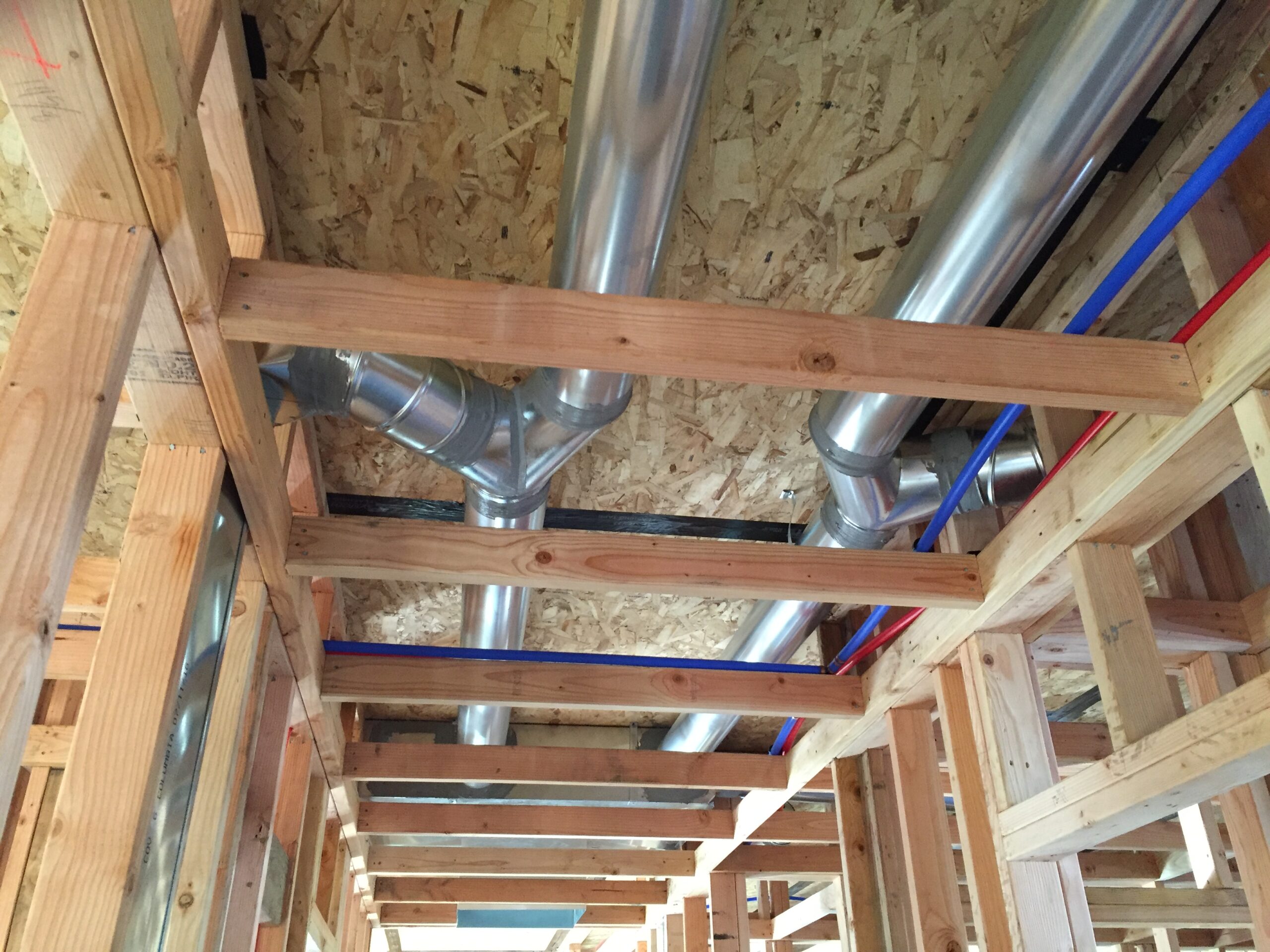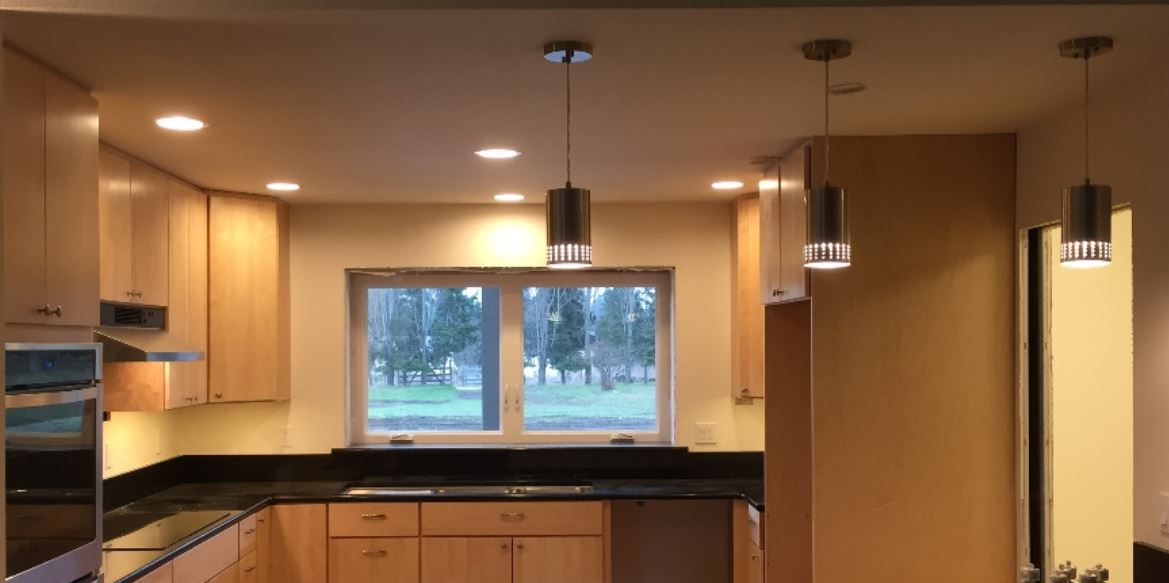Equipment
Now that we have dealt with passive energy savers, it’s time to talk about active Equipment. By equipment, we mean everything in the house that uses electricity.
The two biggest users in most houses are the heating/cooling system and the hot water heater, so we’ll cover them first.
In the Demonstration House, the electric car also plugs in, but we’ll cover that in a separate Vehicles topic under Your Turn.
Heating and cooling
 Various architectural choices (covered in the Design topic) coupled with insulation and airflow management and local weather conditions determine the rate at which the house loses heat on the coldest winter day and gains it on the hottest summer day. That, in turn, determines the minimum size of the heating/cooling system.
Various architectural choices (covered in the Design topic) coupled with insulation and airflow management and local weather conditions determine the rate at which the house loses heat on the coldest winter day and gains it on the hottest summer day. That, in turn, determines the minimum size of the heating/cooling system.
We calculated that the peak winter heat loss would be 9425 BTU/h and the peak summer heat gain would be 8719 BTU/h using the procedures in Manual J: Residential Load Calculation (see Resources for additional information). The pie-chart shows the relative contributions to the total heating loss.
For most all-electric houses, the most efficient heating and cooling system is a “mini-split” heat pump. Heat pumps work by moving heat between the outside air and the in-house air. We selected a Fujitsu Model 12RLFCD, which has a peak heating capability of 16,000 BTU/h and a peak cooling capacity of 12,000 BTU/h. It is about 3.5 times as efficient as a conventional electric system, whether baseboard or forced air.
 Many mini-split heat pumps are “ductless,” meaning that the indoor unit just hangs exposed on an interior wall. We wanted to ensure that the conditioned air would reach throughout the house and so opted for a ducted version. As you can see in the picture, the ducts are routed through the dropped-ceiling duct chase.
Many mini-split heat pumps are “ductless,” meaning that the indoor unit just hangs exposed on an interior wall. We wanted to ensure that the conditioned air would reach throughout the house and so opted for a ducted version. As you can see in the picture, the ducts are routed through the dropped-ceiling duct chase.

The indoor unit is very compact, measuring just 8” x 28” x 25” and runs almost silently.
The outdoor unit measures just 24” x 31” x 11” and is much quieter than conventional air conditioners.
hot water
 The second largest energy user in most homes is the hot water heater. Conventional electric water heaters work like an electric tea kettle and are typically about 90% efficient. The alternative we chose is an 80-gallon heat pump water heater. These work by moving heat from air to the water and require only about one-third as much electricity as a conventional unit.
The second largest energy user in most homes is the hot water heater. Conventional electric water heaters work like an electric tea kettle and are typically about 90% efficient. The alternative we chose is an 80-gallon heat pump water heater. These work by moving heat from air to the water and require only about one-third as much electricity as a conventional unit.
The heat pump sits on top of the water tank. If this were in a garage or outside, it would move heat from the surrounding air to the water. Since ours is in an inside room, we added ducts to bring air from outside so that the unit would not be cooling the house while heating the water.
There is a newer unit made by Sanden that moves the heat pump portion outside the house and so avoids the need for the ducts.
AO Smith model is a little noisier that we would like, but it has been trouble-free and its energy usage has consistently been even lower than estimated by the manufacturer.
lighting
 We have taken advantage of the revolution that has taken place in the lighting industry and used only LED lights throughout the house (with exception of the lights inside the oven and clothes dryer – LEDs don’t yet work at those temperatures).
We have taken advantage of the revolution that has taken place in the lighting industry and used only LED lights throughout the house (with exception of the lights inside the oven and clothes dryer – LEDs don’t yet work at those temperatures).
LEDs use about 1/6 as much power as conventional incandescent lights and about half as much power as conventional fluorescent lights. The Demonstration House is now over three years old and we have yet to replace a single burned-out bulb.
cooking
Rather than using a conventional electric cooktop, we opted for an induction model. These directly heat pans using a magnetic field. By contrast a conventional smooth-top model heats an element which then heats the cooktop, which, in turn, heats the pot.
An induction cooktop is faster, more even heating, faster cooling, and uses about half as much energy. As cooks, we like its responsiveness. It is also safer, as the cooktop will only operate if there is a pan on the unit. The downside is that only pans that a magnet will stick to are compatible, so we had to replace some of our cookware.
Our GE Profile model was comparable in cost to an equivalent conventional smooth-top cooktop. Several manufacturers make induction cooktops and ranges. For an explanation of how induction cooking works see www.geappliances.com/ge/cooking/induction.htm.
Other Appliances
Other appliances were chosen, in part, based on their EnergyStar® efficiency ratings. Because the space and hot water heating are so efficient, other appliances consume more of the remaining power than would be the case in a conventional house. In particular, the ovens and the clothes dryer are major energy hogs. We are looking at putting in clotheslines.
